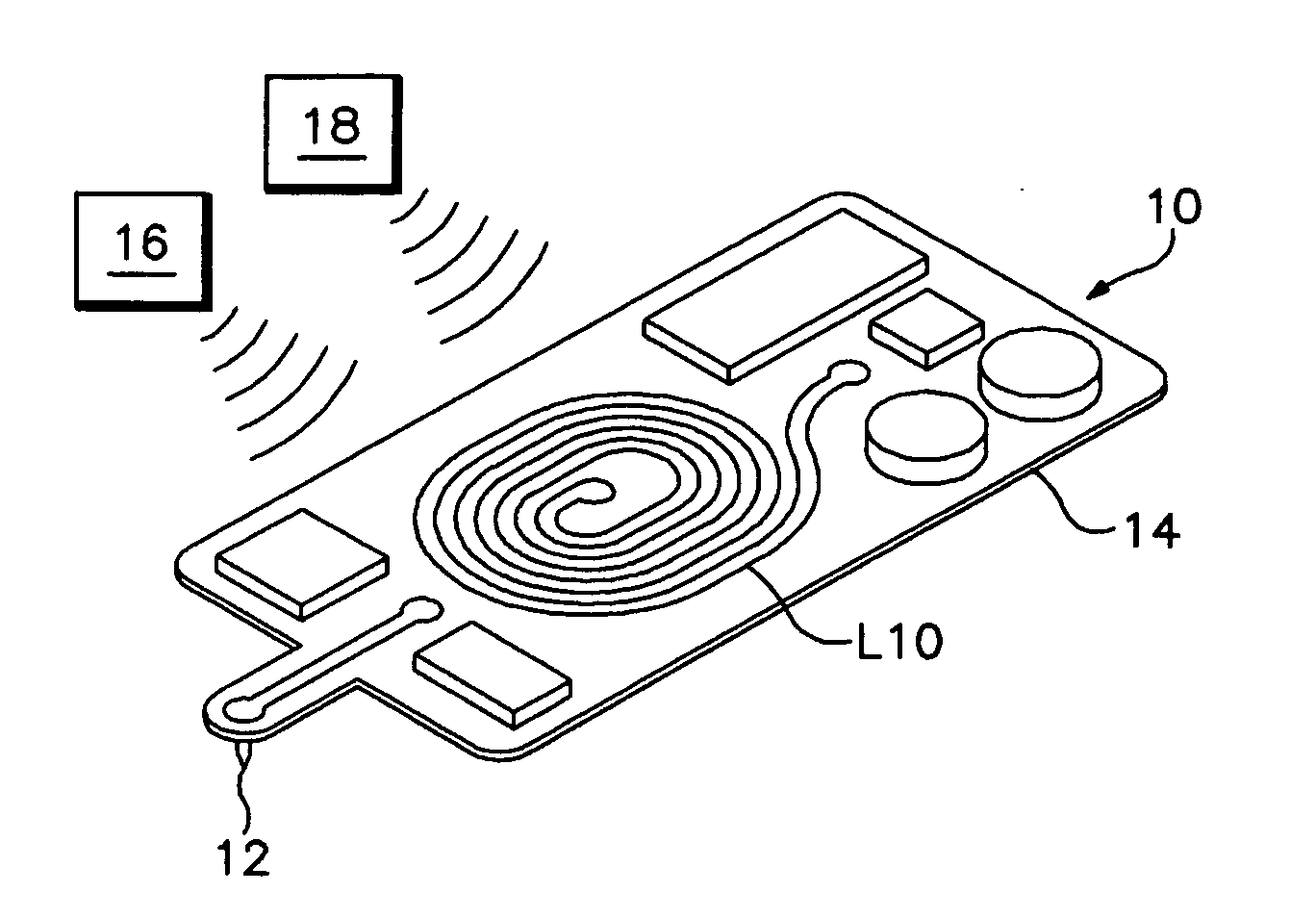Insertable sensor assembly having a coupled inductor communicative system
- Summary
- Abstract
- Description
- Claims
- Application Information
AI Technical Summary
Benefits of technology
Problems solved by technology
Method used
Image
Examples
Embodiment Construction
[0012] As described in the Background section, and as shown in FIGS. 1 and 2, in a preferred embodiment a glucose sensing and reporting assembly 10 includes an in vivo glucose sensing element 12 and an ex vivo portion 14, which transmits the data from sensing element 12 to an electronic monitoring unit 16. Together, elements 12 and 14 may be considered a glucose or analyte sensing patch.
[0013] In vivo portion 12 may be as described in U.S. Pat. No. 5,165,407. This portion must have a voltage placed across it of 0.65 VDC and produces a sensor current that is generally proportional to the concentration of glucose in body tissue. A typical value for the sensor current is about 5-10 nanoAmps.
[0014] In FIG. 3, elements that could be the same as an element in FIG. 1 or 2, are labeled with the same reference number as in FIG. 1 or 2, plus 100. Referring to FIG. 3, ex vivo portion includes a 3 VDC battery 111 that drives a power supply U10. The 2.048 VDC output of power supply U10 is fed ...
PUM
 Login to View More
Login to View More Abstract
Description
Claims
Application Information
 Login to View More
Login to View More - R&D
- Intellectual Property
- Life Sciences
- Materials
- Tech Scout
- Unparalleled Data Quality
- Higher Quality Content
- 60% Fewer Hallucinations
Browse by: Latest US Patents, China's latest patents, Technical Efficacy Thesaurus, Application Domain, Technology Topic, Popular Technical Reports.
© 2025 PatSnap. All rights reserved.Legal|Privacy policy|Modern Slavery Act Transparency Statement|Sitemap|About US| Contact US: help@patsnap.com


